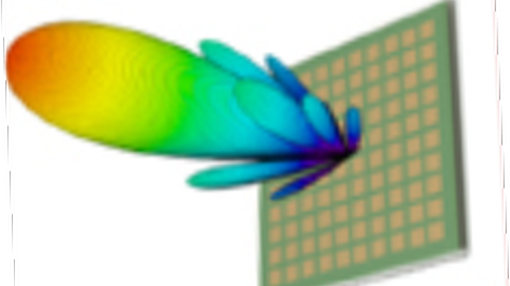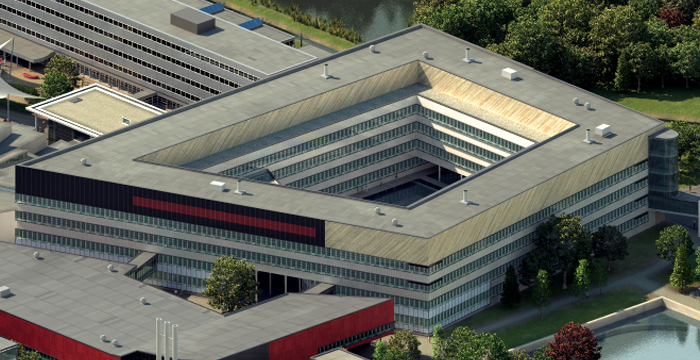Andrés Alayón Glazunov was born in Havana, Cuba. He received the M.Sc. (Engineer-Researcher) degree in physical engineering from Peter the Great St. Petersburg Polytechnic University (Polytech), St. Petersburg, Russia, in 1994, the Ph.D. degree in electrical engineering from Lund University, Lund Sweden, in 2009, and the Docent (Habilitation) qualification in antenna systems from Chalmers University of Technology, Gothenburg, Sweden, in 2017. From 1996-2005, he held various research and specialist positions in the Telecom industry, e.g., Ericsson Research, Telia Research, and TeliaSonera, in Stockholm, Sweden. From 2001-2005, he was the Swedish delegate to the European Cost Action 273 and from 2018-2020 he was the Dutch delegate to the European Cost Action IRACON. He has been one of the pioneers in producing the first standardized OTA measurement techniques for 3GPP, and devising novel OTA techniques, e.g., the Random-LOS and the Hybrid antenna characterization setups.
He has contributed to or initiated various European research projects, e.g., more recently, the is3DMIMO, the WAVECOMBE and the Build-Wise projects under the auspices of the H2020 European Research and Innovation program. Dr. Glazunov has also contributed to the international 3GPP and the ITU standardization bodies. From 2009-2010, he held a Marie Curie Senior Research Fellowship at the Centre for Wireless Network Design, University of Bedfordshire, Luton, the U.K. From 2010-2014, he held a post-doctoral position with the Electromagnetic Engineering Laboratory, KTH-Royal Institute of Technology, Stockholm, Sweden. From 2014-2018, he held an Assistant Professor position at Chalmers University of Technology, Gothenburg, Sweden.
Dr. Glazunov is currently an Associate Professor with the Department of Electrical Engineering, University of Twente, Enschede, the Netherlands, where he is leading the Radio, Propagation and Antenna Systems research. And he is also an Affiliate Professor with the Chalmers University of Technology, Gothenburg, Sweden, where he is leading the OTA Characterization of Antenna Systems research area. He is the author of more than a hundred scientific and technical publications. He is the co-author and co-editor of the textbook LTE-Advanced and Next Generation Wireless Networks – Channel Modelling and Propagation (Wiley, 2012). His current research interests include, but are not limited to mmWave array antenna design, MIMO antenna systems, electromagnetic theory, fundamental limitations on antenna-channel interactions, radio propagation channel measurements, modeling and simulations, wireless performance in the built environment, and the OTA characterization of antenna systems and wireless devices.
Expertise
Physics
- Arrays
- Utilization
- Antenna Arrays
- Antenna
- Performance
- Gaps
- Region
- Air
Organisations
My current research interests include, but are not limited to
- mmWave array antenna design,
- MIMO antenna systems,
- electromagnetic theory,
- fundamental limitations on antenna-channel interactions,
- radio propagation channel measurements, modeling, and simulations,
- wireless performance of buildings and the built environment, and
- the OTA characterization of antenna systems and wireless devices.
Summary of Main Research Milestones
I have conceptualized, defined, devised, or otherwise fundamentally contributed, alone or together with collaborating researchers from industry or academia, the following research milestones in wireless communications:
2000 – Standardized 3G Spatial Channel Model (EU COST ACTION 259 & 3GPP at Ericsson)
2004 – Standardized Over-The-Air (OTA) Characterization of Wireless Devices (EU COST ACTION 273 & 3GPP at Telia/TeliaSonera)
2009 – General Mathematical Framework for the Characterization of Antenna and Propagation Channels Interactions (at Lund University)
2009 – Physical Limitations on Antennas in Random Propagation Channels by the Spherical Vector Wave Expansion of the Electromagnetic Field (at Lund University)
2010 – Massive MIMO Channel Measurements (Lund University at University of Bedfordshire)
2014 – Virtual Massive MIMO Channel Measurement in a Reverberation Chamber (at KTH-Royal Institute of Technology)
2015 – OTA-aided antenna design (at Chalmers)
2015 – The Random-LOS OTA Characterization method (at Chalmers)
2015 – Random-LOS OTA of Active Wireless Devices on a Vehicle (Ranlos at Chalmers)
2017 – Wireless Building Performance Evaluation (Ranplan at Chalmers)
2020 – The Hybrid Multipath-LOS OTA Chamber (Chalmers at University of Twente)
Publications
2025
2024
Other contributions
Published journal papers and arXiv papers
2016 - 2018
N. Amani, A. Alayón Glazunov, M. V. Ivashina, and R. Maaskant, Multi-User Distribution “Effect on the Power Allocation of a Zero-Forcing Beamformed Uniform Linear Array,” in IEEE Wireless Comm. Letters, vol. 22, no. 12, pp. 2515-2518, Dec. 2018., DOI: 10.1109/LCOMM.2018.2871828
Y. Miao, J.-I. Takada, K. Saito, K. Haneda, A. Alayón Glazunov, Comparison of the Plane Wave and the Spherical Vector Wave Channel Modeling Approaches for the Characterization of the Diffuse Scattering Component”, in IEEE Antennas and Wireless Propagation Letters, vol. 17, no. 10, pp. 1847-1851, Oct. 2018. DOI: 10.1109/LAWP.2018.2868108
M. S. Kildal, J. Carlsson and A. Alayón Glazunov, Measurements and Simulations for Validation of the Random-LOS Measurement Accuracy for Vehicular Applications, IEEE Transactions on Antennas and Propagation, vol. 66, no. 11, pp. 6291-6299, Nov. 2018. DOI: 10.1109/TAP.2018.2869133.
A. Alayón Glazunov and P. Hj. Lehne, A Spherical Model of the User-Induced Mobile Phone Orientation Randomness, in IEEE Access, vol. 6, pp. 37185-37194, 2018. DOI: 10.1109/ACCESS.2018.2839960
A. Razavi, A. Alayon Glazunov, S. Mansouri Moghaddam, R. Maaskant, and J. Yang, "Characterization Method of an Automotive Random-Los OTA Measurement Setup," Progress In Electromagnetics Research C, Vol. 84, 47-60, 2018.
A. Razavi, W. Yu, J. Yang, A. Alayón Glazunov, Design of a Planar Eleven Antenna for Optimal MIMO Performance as a Wideband Micro Base-station Antenna, arXiv:1804.05971v1 [eess.SP], 16 April 2018.
C. Bencivenni, A. Alayón Glazunov, R. Maaskant, M. V. Ivashina, Aperiodic Array Synthesis for Multi-User MIMO Applications, arXiv:1808.08321v1 [eess.SP], 24 Aug 2018.
S. M S. M. Moghaddam, A. Alayón Glazunov, P.-S. Kildal, J. Yang, Wideband Dual-Polarized Linear Array Antenna For Random-LOS OTA Measurement, in IEEE Transactions on Antennas and Propagation, vol. 66, no. 5, pp. 2365-2373, May 2018. DOI: 10.1109/TAP.2018.2814077.
B. Donald Oakes, L-G Mattsson, P. Näsman, and A. Alayón Glazunov, A Generalised Risk Assessment Framework for Intentional Electromagnetic Interference (IEMI) on Distribution Networks, Risk Analysis. DOI:10.1111/risa.12945, 3 Jan. 2018.
A. Razavi and A. Alayón Glazunov, "Probability of Detection Functions of Polarization-MIMO Systems in Random-LOS," in IEEE Access, vol. 5, pp. 25635-25645, 2017.
S. M. Moghaddam, A. Alayón Glazunov, P.-S. Kildal, J. Yang, and M. Gustafsson, Improvement of an Octave Bandwidth Bowtie Antenna Design Based on the Analysis of a MIMO Efficiency Metric in Random-LOS, forthcoming at Microwave and Optical Technology Letters, Vol. 59, No. 6, 2017.
A. Razavi, A. Alayón Glazunov, P.-S. Kildal, and J. Yang, “Characterizing Polarization-MIMO Antennas in Random-LOS Propagation Channels”, IEEE Access, vol. 4, no. , pp. 10067-10075, 2016.
A. Hussain, A. Alayón Glazunov, B. Þór Einarsson, and P.-S. Kildal, “Antenna Measurements in Reverberation Chamber Using Software Defined Radio” IEEE Transactions on Antennas and Propagation, vol. 64, no. 3, pp. 1152-1157, March 2016.
2011 - 2015
A. Hussain, P.-S. Kildal and A. Alayón Glazunov, Interpreting the Total Isotropic Sensitivity and Diversity Gain of LTE-enabled wireless devices from Over The Air Throughput Measurements in Reverberation Chambers, IEEE Access, vol.3, pp.131-145, 2015.
A. Alayon Glazunov, A Survey of the Application of the Spherical Vector Wave Mode Expansion Approach to Antenna-Channel Interaction Modeling, Radio Science. Invited paper to the Special Issue on “Green Radio Communications”. Vol 49, Iss.8, pp. 663–679, Aug. 2014.
A. Alayon Glazunov, M. Bäckström, B. D. Oakes, Probability Distribution Function of the Electric Field Strength from a CW IEMI Source. IEEE Transactions on Electromagnetic Compatibility, vol.56, no.6, pp.1550-1558, Dec. 2014.
A. Alayon Glazunov, P. Sathyaveer, P. Händel, Thomas Bolin and K. Prytz. Impact of the Scattering within an MPS Antenna Array on the Measurement accuracy of OTA Tests of Mobile Terminals, IEEE Transactions on Antennas and Propagation. vol.62, no.6, pp.3257 - 3269, June 2014.
A. Alayon Glazunov, P. Sathyaveer, and P. Händel, Experimental Characterization of the Propagation Channel along with a Very Large Virtual Array in a Reverberation Chamber, Progress In Electromagnetics Research B, Vol. 59, 205-217, 2014.
S. Zhang, A. Alayon Glazunov, Z. Ying and S. He. Reduction of the Envelope Correlation Coefficient with Improved Efficiency for Mobile LTE MIMO Antenna Arrays Part I: Mutual Scattering Mode, IEEE Transactions on Antennas and Propagation, vol.61, no.6, pp.3280-3291, June 2013.
A. Alayon Glazunov. Maximum joint transmit-receive MRC gain with antennas exciting spherical vector wave modes up to order l, IET Electronics Letters, Volume 48, issue 24, p. 1520 - 1522, November 2012.
A. Alayon Glazunov. An Energy-Efficient MIMO Algorithm with Receive Power Constraint. arXiv: 1205.0927 [cs.IT], 4 May 2012.
A. Alayon Glazunov and J. Zhang, A note on the bivariate distribution representation of two perfectly correlated random variables by Dirac’s -function. arXiv: 1205.0933v1 [cs.NI], 4 May 2012.
A. Alayon Glazunov. Expansion of the Kronecker and Keyhole Channels into Spherical Vector Wave Modes, IEEE Antennas and Wireless Propagation Letters, vol.10, no., pp.1112-1115, 2011.
A. Alayon Glazunov and J. Zhang. On Some Optimal MIMO Antenna Coefficients in Multipath Channels, Progress In Electromagnetics Research B, Vol. 35, 87-109, 2011.
A. Alayon Glazunov, M. Gustafsson, and A. F. Molisch. On the physical limitations of the interaction of a spherical aperture and a random field, IEEE Transactions on Antennas and Propagation, Vol.59, No.1, pp.119 - 128, Jan. 2011.
2006 - 2010
A. Alayon Glazunov, M. Gustafsson, A. F. Molisch, and F. Tufvesson. Physical modelling of MIMO antennas and channels by means of the spherical vector wave expansion, IET Microwaves, Antennas and Propagation, Vol.4, No.6, pp.778 - 791, June 2010.
A. Alayon Glazunov, M. Gustafsson, A. F. Molisch, F. Tufvesson, and G. Kristensson. Spherical vector wave expansion of Gaussian electromagnetic fields for antenna-channel interaction analysis. IEEE Transactions on Antennas and Propagation, Vol.57, No.7, pp.2055 - 2067, July 2009.
A. Alayon Glazunov, A. F. Molisch, and F. Tufvesson. Mean effective gain of antennas in a wireless channel, IET Microwaves, Antennas and Propagation, Vol. 3, No. 2, pp. 214 - 227, March 2009.
H. Asplund, A. Alayon Glazunov, A. F. Molisch, K. I. Pedersen, and M. Steinbauer. The COST 259 Directional Channel Model Part II: Macrocells, IEEE Transactions on Wireless Communications, Vol. 5, No. 12, pp. 3434 - 3450, December 2006.
Books and book chapters
G. de La Roche, A. Alayon Glazunov and B. Allen (Eds.). LTE-Advanced and Next Generation Wireless Networks - Channel Modelling and Propagation, John Wiley & Sons, October 2012.
L. M. Correia (Main Ed.), (A. Alayon Glazunov contributor and editor) Mobile broadband multimedia networks: techniques, models and tools for 4G, Academic Press, Elsevier, 2006.
A. Alayon Glazunov, Z. Lai and J. Zhang. Chapter 5 Outdoor-Indoor Channel in LTE Advanced and Next Generation Wireless Networks - Channel Modelling and Propagation, John Wiley & Sons, October 2012.
A. Alayon Glazunov, V. M. Kolmonen and T. A. Laitinen. Chapter 15 MIMO Over-the-Air Testing in LTE-Advanced and Next Generation Wireless Networks - Channel Modelling and Propagation, John Wiley & Sons, October 2012.
P. Degauque, A. Alayon Glazunov, A. Sibille, and J. Pamp. Antennas and diversity: from narrowband to ultra-wide band. Book chapter in Mobile Broadband Multimedia Networks: techniques, models and tools for 4G, pp. 218 - 276, ISBN 0 - 12 - 369422 - 1, Academic Press, Elsevier, 2006.
Research profiles
I'm teaching and coordinating an MSc level course on MIMO systems, channels and antennas. The course gives some fundamental notions on MIMO channels, algorithms and performance metrics. MIMO antenna systems are a fundamental ingredient of 4G, 5G and Beyond 5G wireless systems.
I offer a variety of BSc and MSc thesis projects covering both theoretical and more practical aspects of antennas and propagation, related to antenna design, antenna characterization techniques, channel measurements, and modelling, as well as MIMO/Massive MIMO topics.
Courses academic year 2025/2026
Courses in the current academic year are added at the moment they are finalised in the Osiris system. Therefore it is possible that the list is not yet complete for the whole academic year.
Courses academic year 2024/2025
Current projects

WAVECOMBE - mmWave Communications in the Built Environments
This project has received funding from the European Union Horizon 2020 research and innovation program under the Marie Skłodowska-Curie grant agreement No. 766231 WAVECOMBE H2020-MSCA-ITN-2017.
The foreseen exponential growth of mobile data traffic will not be uniform across geographical areas but is mainly concentrated in hot spots that are usually located in the built environments (BEs) such as central business districts, stations, airports, stadiums, dense urban environments, etc. This poses considerable challenges that we believe can be solved by ultra-dense deployment of millimetre-wave (mmW) small-cells (SCs) in conjunction with massive multiple-input multiple-output (MIMO) in 5G and beyond 5G (B5G) wireless networks. However, there are a number of research challenges that need to be addressed for a successful deployment of 5G/B5G wireless networks: even if the theoretical background of massive MIMO is by now rather complete, the actual performance characterization and measurements of mmW antenna arrays have not yet been fully addressed at either the component or system level; mmW radio channel measurements have been performed but with limited time delay resolution, single antennas and over single radio links; and mmW bands have been considered for mobile communications, but the level of detail and diversity of BEs necessary for meaningful mmW SC deployment has not been fully exploited. Therefore, we propose here a research approach that combines the three disruptive key enabling technologies for 5G/B5G with the aim to answer fundamental questions that are still not well understood. Objectives: Develop and test mmW MIMO and massive MIMO antennas. Characterize and model radio propagation channel at mmW bands for typical BEs (offices, homes, stations, airports). Characterize and model the effect of the human body on MIMO radio propagation at mmW bands. Theoretically analyze and optimize massive MIMO mmW SC performance in the BEs. Jointly optimize the planning/deployment of massive MIMO mmW SC networks and their operating environments. Develop methods to retrofit existing buildings and to design new buildings for efficient high-capacity wireless communications in the BEs.

Indoor Small-Cell Networks with 3D MIMO Array Antennas (is3DMIMO)
This project has received funding from the European Union Horizon 2020 research and innovation program under the Marie Skłodowska-Curie grant agreement No. 734798 is3DMIMO H2020-MSCA-RISE-2016.
It is predicted that wireless network traffic will increase 1000 times in the next decade. The exponential traffic growth is not uniform across geographical areas and mainly takes place in indoor hot spots. Hence, high capacity indoor venues represent the biggest network capacity increase challenge. The recently emerged 3D MIMO technology provides a promising dimension to provide an extra capacity gain in hot spots. In particular, the 3D deployment of small cells (SCs) equipped with 3D MIMO antenna arrays will take advantage of the 3D distribution of user equipment (UE) in typical high capacity venues, and represents an excellent technical combination to address the indoor high capacity challenge. The 3D deployment of SCs with 3D MIMO antenna arrays faces technical challenges ranging from 3D MIMO antenna array design, performance evaluation, the lack of understanding of 3D MIMO SC network performance limits to the optimal 3D SC network deployment.

The OTA Project
Over-The-Air Characterization of Active Integrated Antennas for Mobile Systems
Through the past decades, the research area of antenna measurements (AMs) has undergone disruptive changes that have been stimulated by the development of novel wideband multiple-input multiple-output (MIMO) antenna systems and beamforming applications for wireless communications (e.g., 5G). The modern area of AM research can be referred to as Over-The-Air (OTA) characterization of antenna systems. OTA evaluates the impact of hardware, wave propagation, signal processing on the overall performance of the antenna system with regard to the most relevant parameters of wireless network performance. The key game changers and associated challenges that shape the OTA research come from the global shift towards massive multi-antenna systems (aka Massive MIMO), more advanced (hybrid analog-digital) signal processing, and much higher levels of integration between individual components (including active components too) and sub-systems. Performance testing of such advanced antenna systems requires sophisticated test methods and often new types of measurement tools. Moreover, until recently, testing of radio base stations could be performed conductively at a test port. This option is not sustainable for a large number of antenna ports and in fact, it is not even technically possible when going Massive MIMO at higher frequency bands, eg., at the mmWave frequency bands. OTA is therefore indispensable to characterize the performance of radio base stations at mmWaves but is also beneficial at lower frequencies too.
Address

University of Twente
Carré (building no. 15), room C3617
Hallenweg 23
7522 NH Enschede
Netherlands
University of Twente
Carré C3617
P.O. Box 217
7500 AE Enschede
Netherlands